Intro
Discover the ultimate HPV testing guide, covering types, procedures, and results. Learn about cervical cancer screening, HPV vaccine, and diagnosis methods, including Pap smear and DNA tests, to protect against human papillomavirus.
Human Papillomavirus (HPV) is one of the most common sexually transmitted infections (STIs) worldwide, affecting millions of people every year. It is a significant public health concern due to its link with various types of cancer, including cervical, anal, and oropharyngeal cancer. HPV testing has become a crucial tool in the early detection and prevention of these cancers. In this article, we will delve into the world of HPV testing, exploring its importance, types, and procedures, as well as providing guidance on how to navigate the testing process.
The importance of HPV testing cannot be overstated. According to the World Health Organization (WHO), HPV is responsible for approximately 570,000 cases of cervical cancer and 311,000 deaths from the disease worldwide each year. In addition to cervical cancer, HPV is also linked to other types of cancer, such as anal, oropharyngeal, and penile cancer. Early detection through HPV testing can significantly improve treatment outcomes and save lives. Furthermore, HPV testing can also help identify individuals who are at risk of developing these cancers, allowing for prompt intervention and prevention measures.
HPV testing is particularly important for individuals who are sexually active, as the virus can be transmitted through skin-to-skin contact during vaginal, anal, or oral sex. The Centers for Disease Control and Prevention (CDC) recommends that all women between the ages of 21 and 65 undergo regular HPV testing as part of their cervical cancer screening. Additionally, men who have sex with men (MSM) and individuals with weakened immune systems, such as those with HIV/AIDS, are also at increased risk of HPV-related cancers and should consider regular testing.
Types of HPV Testing
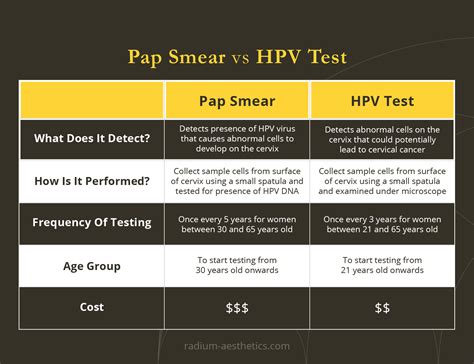
There are several types of HPV testing available, each with its own advantages and limitations. The most common types of HPV testing include:
- Pap test: Also known as a Pap smear, this test involves collecting cells from the cervix to detect abnormal cell changes that may indicate HPV infection.
- HPV DNA test: This test detects the genetic material (DNA) of the HPV virus in cervical cells, allowing for the identification of high-risk HPV types.
- HPV RNA test: This test detects the genetic material (RNA) of the HPV virus in cervical cells, providing information on the presence and activity of the virus.
- Type-specific HPV testing: This test identifies specific types of HPV, such as HPV 16 and 18, which are associated with a higher risk of cancer.
How HPV Testing Works
HPV testing typically involves a healthcare provider collecting a sample of cells from the cervix or other affected area. The sample is then sent to a laboratory for analysis, where it is tested for the presence of HPV DNA or RNA. The results of the test can indicate whether an individual has a high-risk HPV infection, which can increase their risk of developing cancer.Benefits of HPV Testing
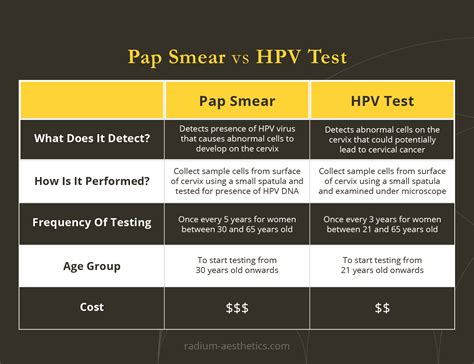
The benefits of HPV testing are numerous. Some of the most significant advantages include:
- Early detection: HPV testing can detect abnormal cell changes and HPV infections early, allowing for prompt treatment and prevention of cancer.
- Improved treatment outcomes: Early detection and treatment of HPV-related cancers can significantly improve treatment outcomes and save lives.
- Reduced risk of cancer: HPV testing can help identify individuals who are at risk of developing cancer, allowing for prompt intervention and prevention measures.
- Increased peace of mind: HPV testing can provide individuals with peace of mind, knowing that they are taking proactive steps to protect their health.
Who Should Get Tested
HPV testing is recommended for individuals who are at risk of HPV-related cancers. This includes:- Women between 21 and 65: The CDC recommends that all women between 21 and 65 undergo regular HPV testing as part of their cervical cancer screening.
- Men who have sex with men (MSM): MSM are at increased risk of HPV-related cancers, particularly anal cancer, and should consider regular testing.
- Individuals with weakened immune systems: Individuals with weakened immune systems, such as those with HIV/AIDS, are at increased risk of HPV-related cancers and should consider regular testing.
Preparing for HPV Testing
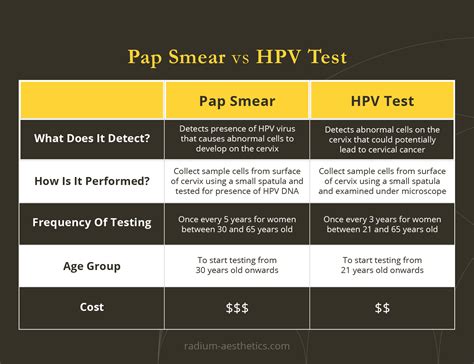
Preparing for HPV testing is relatively straightforward. Here are some tips to help you prepare:
- Schedule an appointment: Schedule an appointment with your healthcare provider to discuss HPV testing and determine the best course of action for your individual needs.
- Avoid douching or using tampons: Avoid douching or using tampons for at least 24 hours before the test, as this can affect the accuracy of the results.
- Avoid intercourse: Avoid intercourse for at least 24 hours before the test, as this can also affect the accuracy of the results.
What to Expect During the Test
During the test, a healthcare provider will collect a sample of cells from the cervix or other affected area. This may involve:- A Pap test: A Pap test involves collecting cells from the cervix using a spatula and brush.
- A colposcopy: A colposcopy involves using a special microscope to examine the cervix and vagina for abnormal cell changes.
Understanding HPV Test Results
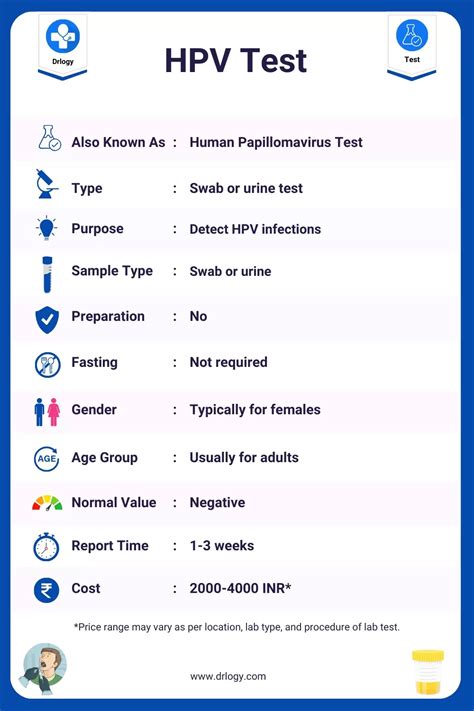
Understanding HPV test results can be complex, but here are some general guidelines:
- Normal results: Normal results indicate that no abnormal cell changes or HPV infection were detected.
- Abnormal results: Abnormal results indicate that abnormal cell changes or HPV infection were detected.
- High-risk HPV: High-risk HPV results indicate that an individual has a high-risk HPV infection, which can increase their risk of developing cancer.
Next Steps After Testing
After receiving HPV test results, individuals may need to take additional steps, such as:- Follow-up testing: Follow-up testing may be necessary to monitor the progression of abnormal cell changes or HPV infection.
- Treatment: Treatment may be necessary to address abnormal cell changes or HPV infection.
- Prevention measures: Prevention measures, such as vaccination and safe sex practices, can help reduce the risk of HPV-related cancers.
HPV Vaccination
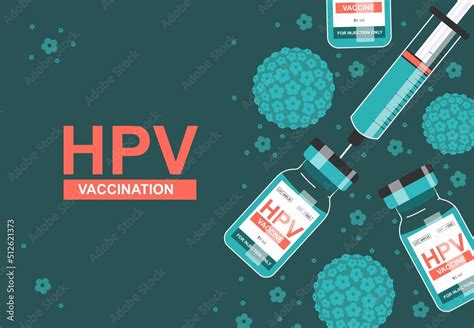
HPV vaccination is a crucial tool in the prevention of HPV-related cancers. The vaccine is recommended for:
- Preteens: The CDC recommends that all preteens receive the HPV vaccine to protect against HPV-related cancers.
- Young adults: Young adults who did not receive the vaccine as preteens can still receive it to protect against HPV-related cancers.
Benefits of HPV Vaccination
The benefits of HPV vaccination are numerous, including:- Protection against HPV-related cancers: The vaccine provides protection against HPV-related cancers, including cervical, anal, and oropharyngeal cancer.
- Reduced risk of genital warts: The vaccine also reduces the risk of genital warts, which are caused by low-risk HPV types.
Conclusion and Next Steps
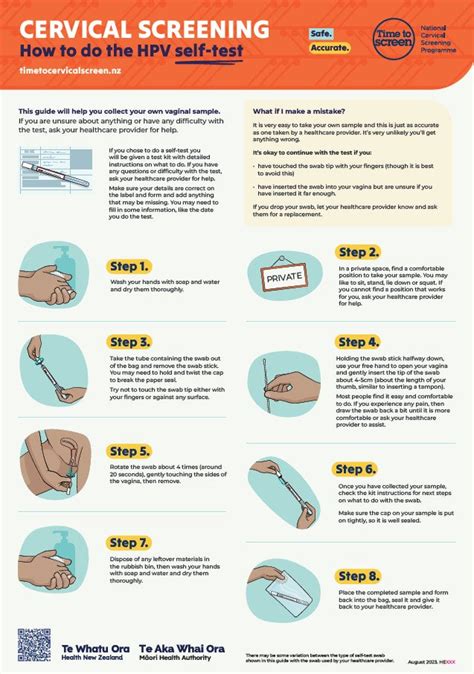
In conclusion, HPV testing is a crucial tool in the early detection and prevention of HPV-related cancers. By understanding the importance of HPV testing, the types of testing available, and the benefits of vaccination, individuals can take proactive steps to protect their health. If you are concerned about HPV or have questions about testing, speak with your healthcare provider to determine the best course of action for your individual needs.
We invite you to share your thoughts and experiences with HPV testing in the comments below. Have you undergone HPV testing? What was your experience like? Do you have any questions or concerns about HPV testing or vaccination? Share your story and help raise awareness about the importance of HPV testing and prevention.
What is HPV testing?
+HPV testing is a medical test used to detect the presence of the human papillomavirus (HPV) in an individual's body.
Who should get tested for HPV?
+The CDC recommends that all women between 21 and 65 undergo regular HPV testing as part of their cervical cancer screening. Additionally, men who have sex with men (MSM) and individuals with weakened immune systems should consider regular testing.
What are the benefits of HPV vaccination?
+The benefits of HPV vaccination include protection against HPV-related cancers, such as cervical, anal, and oropharyngeal cancer, as well as reduced risk of genital warts.
How often should I get tested for HPV?
+The frequency of HPV testing depends on individual risk factors and medical history. Speak with your healthcare provider to determine the best testing schedule for your needs.
Can I get HPV from kissing?
+Yes, HPV can be transmitted through skin-to-skin contact, including kissing. However, the risk of transmission through kissing is relatively low.
